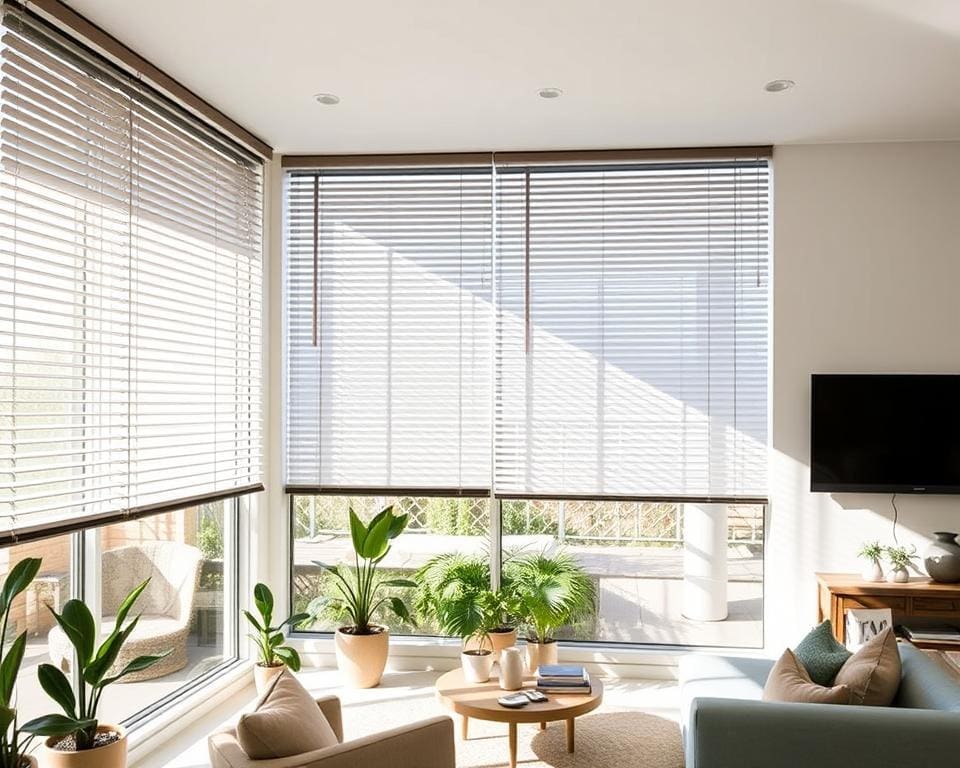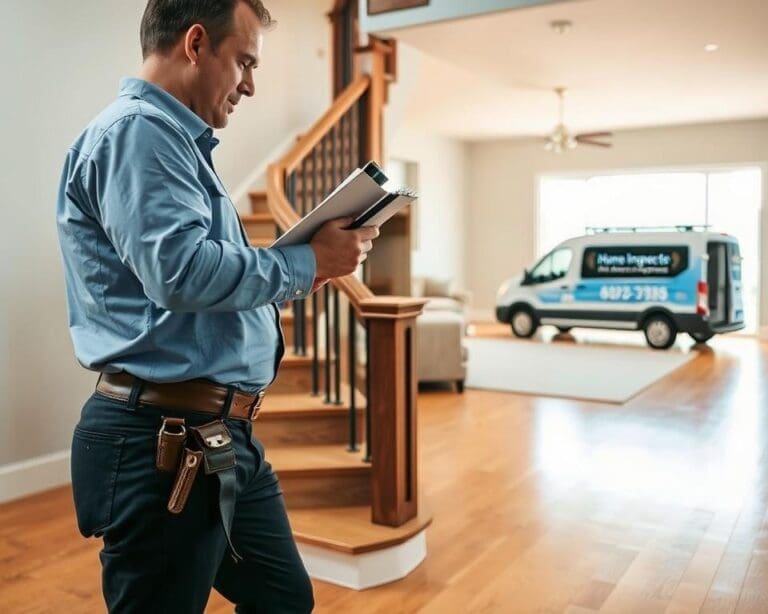In the modern home, achieving easy privacy while enhancing aesthetic appeal is a challenge many face. Enter smart blinds with automatic light adjustment—an innovative solution that redefines how we regard window treatments. These technologically advanced blinds seamlessly blend functionality with style, reacting to changing light conditions while safeguarding your interiors from prying eyes.
With integrated light sensors, these smart blinds ensure that you can enjoy the soothing embrace of natural daylight while maintaining your privacy. Whether it’s a sun-drenched afternoon or a starry night, smart blinds automatically adjust to provide just the right level of coverage. It’s about creating an effortlessly private space that adjusts to your lifestyle, making them an ideal choice for any contemporary home.
Explore more about enhancing your outdoor spaces with effective solutions through awning options that elevate your patio’s.
The Benefits of Smart Blinds
Smart blinds offer a range of advantages that significantly enhance daily living. By implementing these innovative solutions, homeowners can experience remarkable improvements in their living environments.
Enhancing Home Comfort
One of the key benefits of smart blinds lies in their ability to create a comfortable atmosphere at home. These systems allow users to manage natural light effectively, ensuring that spaces remain bright yet not overwhelmingly so. By setting tailored schedules, families can enjoy ideal lighting that aligns with their preferences, contributing to a truly serene living environment. The convenience of controlling these blinds via smart devices elevates the concept of enhancing home comfort to new heights.
Energy Efficiency Advantages
The energy efficiency advantages of smart blinds are equally impressive. By intelligently regulating sunlight, these blinds can help maintain a stable indoor temperature, reducing the need for air conditioning or heating. This functionality ensures that homes remain comfortable throughout different seasons while simultaneously lowering energy costs. With smart blinds, less reliance on traditional energy sources translates to a more sustainable lifestyle, making them an essential addition to modern homes.

How Automatic Light Adjustment Works
The innovation in smart blinds has transformed how light interacts with our living spaces. Central to this functionality are light sensors that play a crucial role in determining the appropriate adjustment based on sunlight intensity. Understanding how automatic light adjustment works begins with these sophisticated sensors.
Understanding Light Sensors
Light sensors are the brain behind the automatic adjustment features of smart blinds. These devices detect changes in light levels and relay information to the control system. Several types of sensors, such as photovoltaic cells and infrared sensors, ensure precise measurement of external brightness. This capability allows for timely adjustments, creating an ideal indoor environment while protecting furnishings from excessive sunlight and heat.
The Technology Behind Smart Blinds
The technology behind smart blinds is multifaceted, incorporating various automated systems that enhance user convenience. Integration with home automation networks facilitates seamless control from smartphones or smart home hubs. Users can set schedules or respond to real-time conditions, creating a personalised experience. With advanced algorithms, these systems maximise the benefits of automatic light adjustment, granting homeowners both functionality and peace of mind.
Smart Blinds with Automatic Light Adjustment: Privacy Made Easy
Smart blinds with automatic light adjustment revolutionise how we maintain privacy in our homes. These innovative solutions blend functionality with aesthetics, allowing homeowners to seamlessly control the amount of sunlight entering their spaces. With automated blinds, individuals can enjoy natural light during the day while ensuring that their private moments remain undisturbed.
The mechanism behind these smart blinds is fascinating. Equipped with advanced sensors, they adjust according to external light conditions. When the sun shines brightly, the automated blinds lower themselves, creating a barrier from outside views. When daylight dims, they retract to allow more light to fill the room. This responsive nature makes privacy made easy while preserving a bright and airy atmosphere.
In urban environments, where spaces can be close together, the desire for privacy is paramount. Smart blinds with automatic light adjustment cater to this need, offering a solution that enhances both comfort and security. People can revel in their homes without concern for prying eyes, all while enjoying the benefits of natural light. This balance forms a perfect backdrop for relaxation and unwinding after a long day.
Real-world applications further highlight the appeal of these automated blinds. Homeowners can set schedules for their blinds to adjust throughout the day, aligning with their activities and preferences. Whether hosting a gathering or simply enjoying a quiet evening, privacy remains intact without the hassle of manual adjustments.
Choosing the Right Smart Blinds for Your Home
When selecting smart blinds for your home, various factors to consider should guide your decision. The perfect blend of functionality and aesthetics not only elevates your living space but also serves your unique needs. Take into account the diverse options available in the market as you embark on this journey of choosing smart blinds.
Factors to Consider
Understanding your specific requirements is vital. Some key points to keep in mind include:
- Window Size: Measure your windows accurately to ensure a proper fit.
- Style: Consider how the blinds will complement your existing decor.
- Integration: Ensure compatibility with your current smart home systems for seamless control.
- Privacy: Evaluate how much privacy you desire in different rooms.
Top Brands in the Market
Several top brands smart blinds stand out for their innovative designs and reliability. Noteworthy options include:
- Lutron: Renowned for high-quality, customizable smart blind solutions.
- IKEA: Offers stylish and affordable options, accessible for many homeowners.
- Hunter Douglas: Features a wide variety of luxurious designs tailored to individual preferences.
Assessing these brands can help you make a more informed decision while ensuring you achieve the perfect balance of style, functionality, and privacy.
The Role of Automated Blinds in Interior Design
Automated blinds have revolutionised the way we think about interior design, effortlessly blending functionality with aesthetic appeal. These smart blinds enhance any room, offering a unique ability to complement diverse decor styles, from contemporary minimalism to traditional elegance. By incorporating automated blinds, homeowners can achieve a refined look while benefiting from the versatility these window treatments provide.
One of the significant advantages of smart blinds lies in their capacity to control natural light. Interior designers increasingly utilise these innovative solutions to create balanced atmospheres that promote well-being. Automated blinds enable precise adjustments, allowing for tailored lighting conditions throughout the day. This feature supports sustainable living, as it helps reduce reliance on artificial lighting, making rooms feel more spacious and inviting.
The emergence of trends focusing on eco-friendly practices has further solidified the role of automated blinds in contemporary interior design. As designers look to integrate natural elements and biophilic principles, these smart solutions align perfectly with the industry’s push towards sustainability. Homeowners not only enjoy visually pleasing spaces but actively contribute to a healthier environment.
In the ever-evolving landscape of interior design, the adoption of automated blinds stands as an essential trend. With a commitment to style and function, these smart blinds help create harmonious living spaces that reflect personal tastes while embracing modern technology. For more insights into current design trends, refer to this resource. The integration of automated solutions offers both elegance and practicality, making them a staple in the decor of today’s homes.
Installation and Maintenance of Smart Blinds
The installation of smart blinds can be an exciting project for those who enjoy tackling home improvements. With the right tools and guidance, a rewarding DIY installation experience is within reach. Following the installation, it’s essential to establish proper maintenance practices that ensure the longevity and effectiveness of your smart blinds.
Installation Tips for DIY Enthusiasts
Before beginning the installation of smart blinds, gather the necessary tools such as a drill, screwdriver, measuring tape, and level. Start by measuring your window accurately, ensuring that you account for any obstructions such as handles or window frames. Clear and detailed instructions typically come with smart blinds, so follow them closely.
- Check the alignment several times to guarantee a perfect fit.
- Secure the brackets firmly to ensure stability.
- Familiarise yourself with the wiring if your smart blinds require a power source.
- Take safety precautions seriously; use goggles and ensure your working environment is safe.
Maintenance Practices for Longevity
Beyond installation, routine maintenance practices play a crucial role in keeping smart blinds functioning well. Regular cleaning helps maintain their appearance and operability. Use a soft cloth for dusting and a mild cleaner for any stubborn spots.
Software updates are equally important; keep the blinds connected to Wi-Fi and follow the manufacturer’s guidelines to stay current with firmware improvements. For troubleshooting, consult the instruction manual or the brand’s customer service for guidance on common issues.
Implementing these maintenance practices ensures that your smart blinds not only look great but also operate smoothly over time.
Cost vs. Value: Are Smart Blinds Worth It?
Investing in smart blinds involves weighing the cost vs value smart blinds as they offer various features that might justify their price. Initial purchase prices can vary significantly, often influenced by the technology incorporated within the blinds. Factors such as remote control integration and compatibility with home automation systems can elevate costs, yet they transform user experience.
Installation expenses should also be contemplated. While some individuals may opt for professional installation, others might choose a DIY approach, which could reduce costs significantly. This flexibility allows potential buyers to explore various options that best fit their budgets.
Smart blinds promise energy savings by optimising natural light, thereby reducing heating and cooling expenses. Over time, these savings may offset the initial investment completely. Consumer testimonials often reflect satisfaction in energy bill reductions, enhancing the argument that are smart blinds worth it.
Beyond financial considerations, smart blinds enhance home aesthetics and comfort. They provide a modern touch while allowing users to control their environment effortlessly. For many, these conveniences help tilt the balance towards worthwhile investment.
Real-Life User Experiences with Smart Blinds
User experiences of smart blinds often reveal a transformative impact on daily life. Many users share how these innovations have notably enhanced their home comfort through improved temperature regulation and light control. Automated blinds allow homeowners to effortlessly adjust their living environments according to the time of day, resulting in a more efficient and serene atmosphere. Customer reviews frequently highlight the satisfaction of never having to manually raise or lower blinds again, offering a seamless blend of convenience and modern technology.
In addition to comfort, privacy emerged as a prominent theme in user experiences with smart blinds. Many owners express a newfound sense of security, knowing that with the touch of a button, they can maintain their privacy without sacrificing natural light. The ability to schedule the operation of these blinds means that users can retain an unobtrusive lifestyle, often drawing favourable comparisons to traditional window coverings.
While the benefits are impressive, some reviews do touch upon the initial learning curve associated with integrating automated blinds into the home. However, these challenges are generally outweighed by the long-term advantages, including energy savings and enhanced home aesthetics. For those considering this upgrade, exploring user experiences smart blinds can provide valuable insights into what to expect and inspire confidence in making this worthwhile investment.









